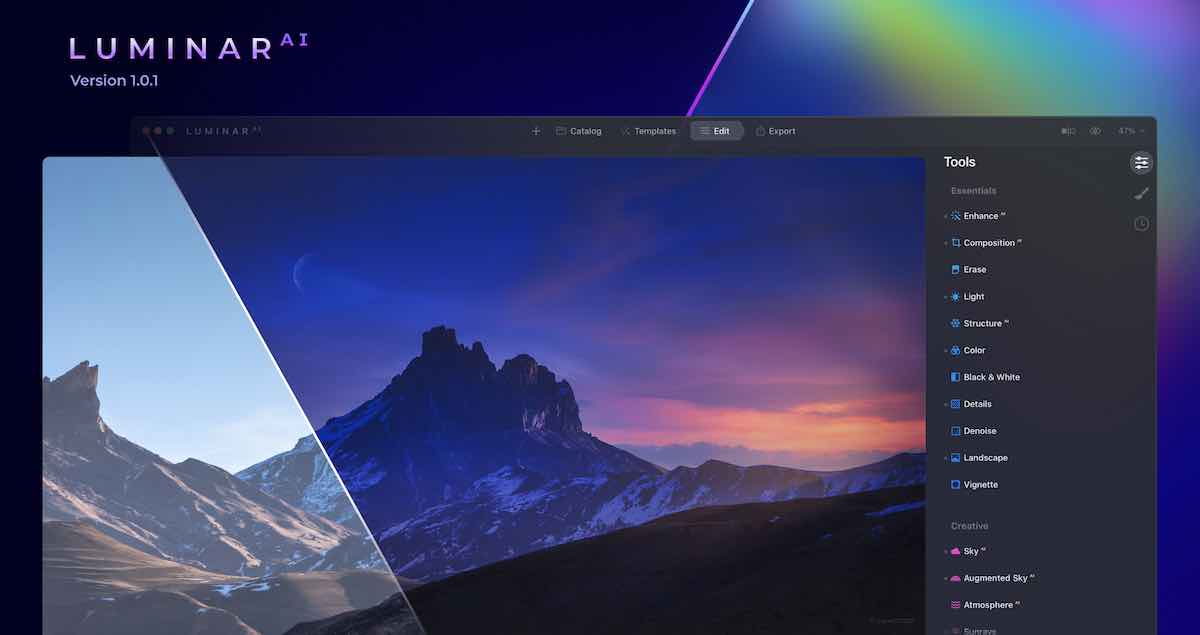

Luminar AI does exactly what it sets out to do, though, by allowing novice photo editors to inject some magic into their images without the need for a lot of know how to time consuming manual editing. You might get more variation and inspiration from the DxO Nik Collection, for example, or a good set of Lightroom presets. Luminar AI’s results are often spectacular, particularly for sky replacement and portrait enhancement, though some of its everyday template suggestions are interesting without necessarily being exciting. (Image credit: Skylum/Digital Camera World) Luminar AI's combination of stylised 'looks' and excellent portrait enhancement tools should win it a lot of instagram fans. The bigger difference is that you can no longer combine and blend different images. You can mask almost all the filters individually, and there is a new Local Masking workspace, but it feels at least as complicated as Adjustment Layers and a little less useful. This means that if you want to mask effects, you can no longer do it with adjustment layers. These were a welcome and useful bonus in Luminar 4, but they too have been removed. Skylum simply offers ‘flag’ ratings – Favorite, Rejected, Unmarked – in a bold and deliberate decision to strip away all unnecessary complication.Īnother thing you won’t find is Layers. But it doesn’t offer ratings or color labels or even any search t tools. It can also show recently added and recently edited photos, and organize your photos by date. The Luminar AI catalog, for example, can display both folders on your computer and custom albums you create yourself. The simplicity means a few things are missing, though, which might not be obvious to new users but will be to users of other software, including Luminar 4. The interface is straightforward and the Catalog > Templates > Edit > Export workflow could hardly be simpler or more obvious. (Image credit: Skylum/Digital Camera World) (opens in new tab) In the 'old' Luminar this brought all sorts of complications with 'stamped' layers. It's easy to remove distracting objects with the Erase tool. What this means is that when you want to share an image you have to use the Export panel to save a processed JPEG or TIFF image – there are preset export settings here for email, messages, SmugMug, 500px or simply saving a file to disk. You can, of course, save your own templates.Īll these adjustments are non-destructive, as already mentioned. If you’ve chose a template already, this will highlight the tools and filters used to create the effect so that you can go to them directly.Īlternatively, you can start from scratch by going straight to the Edit panel and building your enhancements and effects from scratch. If you want to go further and apply your own adjustments, that is easy too via the Edit workspace. This one is a little strong, but there is a strength slider in the bottom right corner to quickly adjust it.

Here, it's recognised that this is a flat, overcast scene and has recommended some templates from its Overcast selection. Luminar AI's templates are a strong feature.


 0 kommentar(er)
0 kommentar(er)
